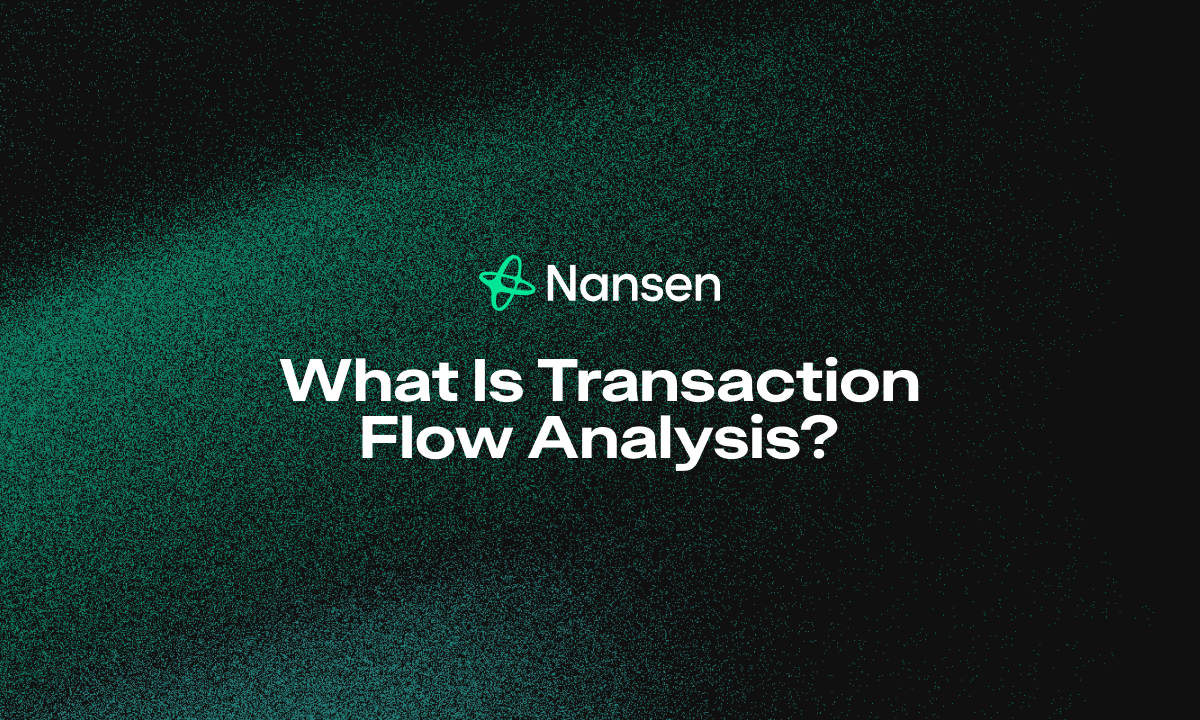When you send or receive crypto, you're leaving a trail. Unlike cash, every Bitcoin, Ethereum, or other cryptocurrency transaction creates a permanent record on the blockchain. Transaction flow analysis is the process of making sense of these digital breadcrumbs – and it's becoming increasingly sophisticated.
Understanding Transaction Flow Analysis
Transaction flow analysis in cryptocurrency refers to the systematic examination of blockchain data to track how funds move between different wallet addresses. This process involves studying transaction patterns, frequencies, and relationships to understand the flow of digital assets across the blockchain.
Think of it as financial detective work. By analyzing blockchain transaction data, analysts can:
- Trace the origin and destination of funds
- Identify patterns that might indicate suspicious activity
- Link seemingly unrelated wallet addresses
- Map relationships between different cryptocurrency users
Key takeaway: Transaction flow analysis turns the transparent nature of blockchains into actionable intelligence about how crypto assets move.
How Transaction Flow Analysis Works
The foundation of crypto tracing lies in the public nature of blockchain technology. Every transaction is recorded on a distributed ledger accessible to anyone. Transaction monitoring in cryptocurrency starts with this public data and applies sophisticated analysis techniques.
Wallet Clustering
Wallet clustering is a critical technique that groups multiple addresses likely belonging to the same entity. Despite the pseudonymous nature of blockchain, where wallet addresses don't directly reveal identity, clustering can connect the dots.
For example, when you withdraw cryptocurrency from an exchange to your personal wallet and then split it between several addresses, blockchain monitoring tools can potentially identify all these addresses as belonging to you based on transaction patterns.
Heuristic Analysis
Analysts apply various heuristics (problem-solving approaches) to blockchain data:
- Common-input-ownership heuristic: Assumes inputs in a transaction likely belong to the same entity
- Change address identification: Identifies which output address is likely a change address returning funds to the sender
- Behavioral patterns: Examines timing, frequency, and size of transactions
Key takeaway: Advanced algorithms can reveal connections between seemingly unrelated transactions, building a comprehensive picture of fund flow tracking.
Real-World Applications
Transaction history analysis isn't just academic – it has significant real-world implications:
1. Law Enforcement and Regulation
Government agencies use blockchain transaction analysis to:
- Track illicit funds
- Investigate financial crimes
- Build cases against money launderers
- Enforce tax compliance
Firms specializing in blockchain intelligence tools have helped recover stolen funds and identify perpetrators of major hacks and scams.
2. Exchange Compliance
Cryptocurrency exchanges implement transaction monitoring systems to:
- Meet anti-money laundering (AML) compliance requirements
- Screen transactions against sanctioned addresses
- Flag suspicious activity
- Integrate with Know Your Customer (KYC) systems
3. Investment Intelligence
For investors and traders, understanding transaction flows provides valuable market insights:
- Large transfers to exchanges might signal selling pressure
- Whale wallet movements can indicate smart money strategies
- Unusual transaction patterns may predict market movements
Key takeaway: Transaction flow analysis serves multiple purposes from regulatory compliance to investment strategy development.
Limitations and Privacy Considerations
Despite its effectiveness, crypto tracing has limitations:
- Privacy coins like Monero use advanced cryptography to obscure transaction details
- Mixing services (tumblers) deliberately obfuscate the trail of transactions
- Cross-chain transactions complicate tracking across different blockchains
- Lightning Network and Layer-2 solutions don't record all transactions on the main blockchain
It's worth noting that the relationship between transaction analysis and privacy is complex. While pseudonymous wallet addresses provide some anonymity, address attribution techniques continue to advance.
Key takeaway: Complete anonymity in cryptocurrency is increasingly difficult to achieve as blockchain monitoring technology evolves.
Popular Transaction Analysis Tools
Several companies have developed specialized blockchain intelligence tools:
- Chainalysis – Market leader used by government agencies and financial institutions
- Elliptic – Focuses on risk management and financial crime detection
- CipherTrace – Specializes in anti-money laundering solutions
- Crystal Blockchain – Offers visual blockchain analytics
- TRM Labs – Provides real-time blockchain analytics for risk management
Each offers different capabilities for transaction monitoring in cryptocurrency, from basic visualization to advanced machine learning algorithms.
The Future of Transaction Flow Analysis
As cryptocurrency adoption grows, expect transaction analysis to evolve in several ways:
- More sophisticated AI to detect complex patterns
- Better cross-chain analysis capabilities
- Increased integration with traditional financial monitoring systems
- Ongoing cat-and-mouse game with privacy technologies
For everyday crypto users, understanding that your transactions leave a traceable footprint is important. While basic privacy practices can help, complete anonymity shouldn't be assumed.
Final Thoughts
Transaction flow analysis represents the intersection of blockchain transparency, sophisticated data science, and practical applications ranging from legal compliance to market intelligence. For investors, understanding these capabilities helps inform both security practices and market strategies.
Whether you're concerned about privacy, curious about market movements, or interested in blockchain technology's capabilities, transaction flow analysis is a fundamental concept worth understanding as you navigate the cryptocurrency ecosystem.
Remember: Blockchain data is transparent by design – how that transparency gets translated into actionable insights is what transaction flow analysis is all about.




